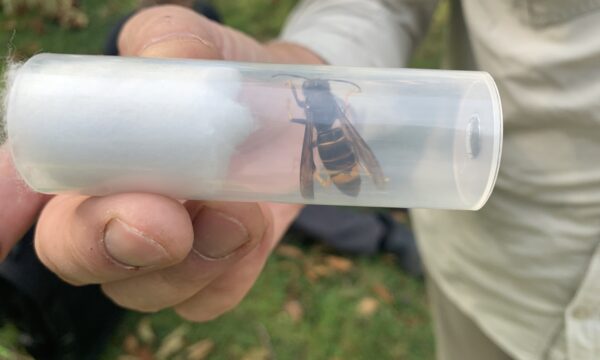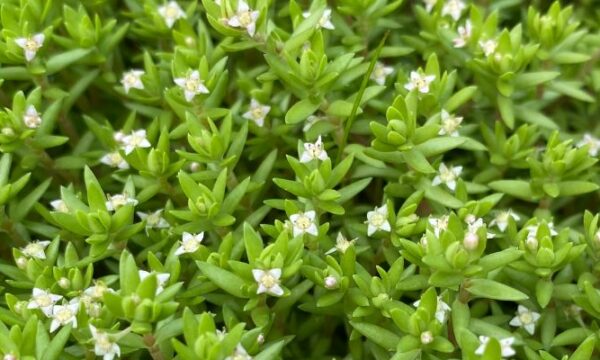Edited by Corin Pratt and Marion Seier.

Giant hogweed is a leading invasive plant across Europe and North America, causing numerous ecological impacts as well as severe phototoxic reactions when coming into contact with skin (© Pexels)
Giant hogweed (Heracleum mantegazzianum) is a monocarpic perennial herb, native to the Caucasus region. Since the late 1800s, giant hogweed has spread extensively across Europe and in eastern and western parts of North America following its likely initial introduction to the continent as an ornamental curiosity as early as 1917. Hogweed is an extremely successful invader in part due to its prolific seed production and growth rate. These attributes coupled with its large size allow giant hogweed to significantly alter natural environments and plant community structures. In addition, the plant is hazardous to humans and leaves riparian banks susceptible to erosion as it dies off in autumn.
Giant hogweed reproduces by seeds, with each umbel producing around 10-50,000 seeds. As the species is biennial or perennial, it takes a number of years to complete its biological lifecycle. Giant hogweed typically reaches the flowering stage after 2-5 years before subsequently dying. Some plants, however, can take more than 10 years to flower. If the plant is cut down (before producing seeds) then it will flower again, and if it is late in the season then the plant will overwinter before flowering and producing seeds the following year.
Giant hogweed forms dense monocultures due to its ability to out-compete native vegetation, and can have detrimental impacts on ecological communities, including in sensitive and vulnerable habitats. Hogweed populations are commonly found on riverbanks, as the seeds are readily dispersed downstream and deposited in the sediment. Over winter periods the plant displays natural die-back, exposing riverbanks to erosion. This is followed by recolonisation in spring through the germination of giant hogweed seeds from a short-term persistent seed bank in the soil in addition to the introduction of new seeds carried downstream.

Phytodermatitis symptoms (© USDA APHIS PPQ, Bugwood.org)
Giant hogweed also poses a threat to human health, as all parts of the plant contain furanocoumarins, a harmful class of chemicals that cause phytodermatitis following skin contact with the plant’s sap. This hypersensitivity to ultraviolet light can result in rashes and blistering. The plant is not painful to touch, so people can walk through stands of hogweed unaware of the risk before suffering symptoms. Skin pigmentation from the phytodermatitis can last from weeks to several months, or more in severe cases.
There are a number of management strategies which can be implemented to control and prevent the spread of giant hogweed. Any long-term management activity should address the seed bank, so as to prevent recolonization of an area subjected to control. The majority of seeds settle in the top 3 cm of the soil, therefore, repeated excavation and removal of the soil can reduce future germination. However, this is an expensive, destructive and time-consuming process. Intensive grazing has been demonstrated as a tool for controlling populations on a limited scale. A study undertaken in Denmark reported that heavy grazing by sheep and pigs can significantly reduce hogweed populations after 2 years, and result in local eradication of populations after 5 years, with no viable seeds remaining. It is recommended however to initiate grazing practices in mid-spring as sheep actively seek out younger plants, with thick-pelted domesticated animals being the preferred choice as they are less susceptible to dermatitis. Manual and mechanical cutting of hogweed are commonly used methods for management, however, can prove ineffective in heavily invaded areas due to the plant’s ability to re-grow following cutting. Cutting of the tap root around 15 cm below the soil surface can be an effective method to kill a plant, but is a time-consuming approach. Systemic herbicides such as glyphosate can also be effective against the weed, but as with most methods mentioned, this intervention must be repeated for several years (ideally as a catchment scale) in order to kill plants previously missed, plants emerging from the seed bank and plants germinating from seeds carried by wind or water from other source populations.

Giant hogweed is difficult to control and can grow into large stands which out compete native vegetation (© Jan Samanek, Phytosanitary Administration, Bugwood.org)
Classical biological control has been evaluated as one management option for the weed; several arthropods and fungal pathogens from the native range of giant hogweed for their potential as biocontrol agents as part of a collaborative EY project (GIANT ALIEN, 2002-2005). However, none of the selected natural enemies assessed were found to be sufficiently host specific as they also attacked other Heracleum species, and some of them, other Apiaceae, in particular, parsnip, Pastinaca sativa.
Consequently, none of the agents were deemed safe for introduction into the exotic European range of giant hogweed. The approach to use organisms, in particular, fungal pathogens, indigenous to the introduced range of H. mantegazzianum to control the invasive has as yet not been adequately assessed.
If you would like to read further information on giant hogweed, then please follow the links below:
Related News & Blogs
Training on mass production of entomopathogenic nematodes for biological control of invasive insect pests
A team of global experts in the production of biocontrol agent provided a practical training on the mass culture of entomopathogenic nematodes at the Biocontrol Agent Facility of Rwanda Agriculture and Animal Resource Development Board (RAB), writes Dr…
20 December 2023




